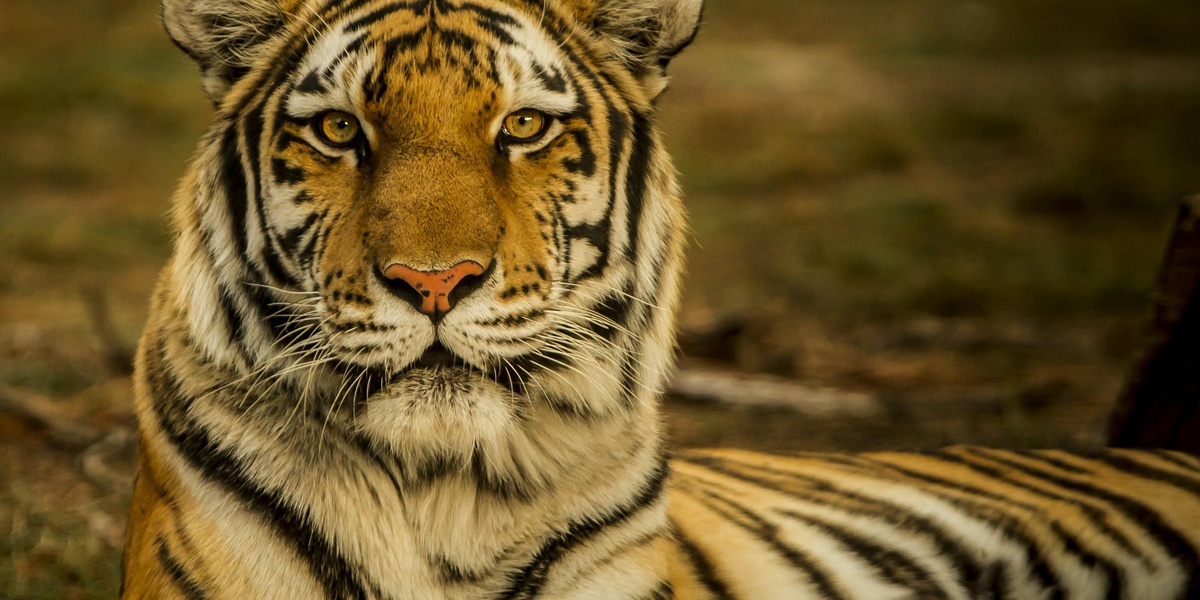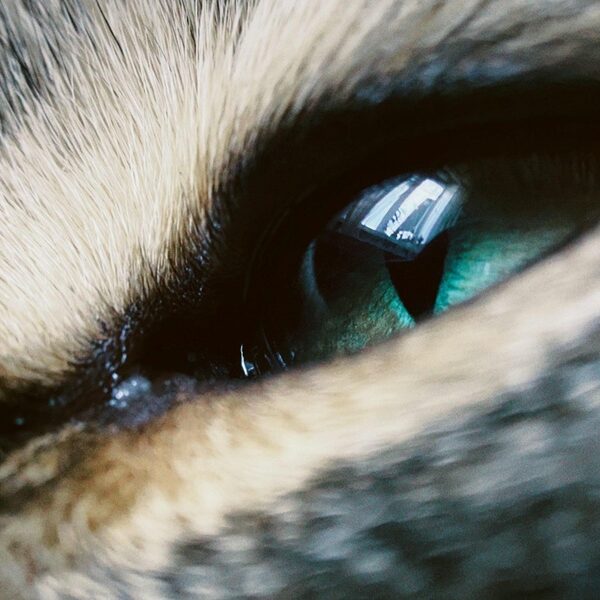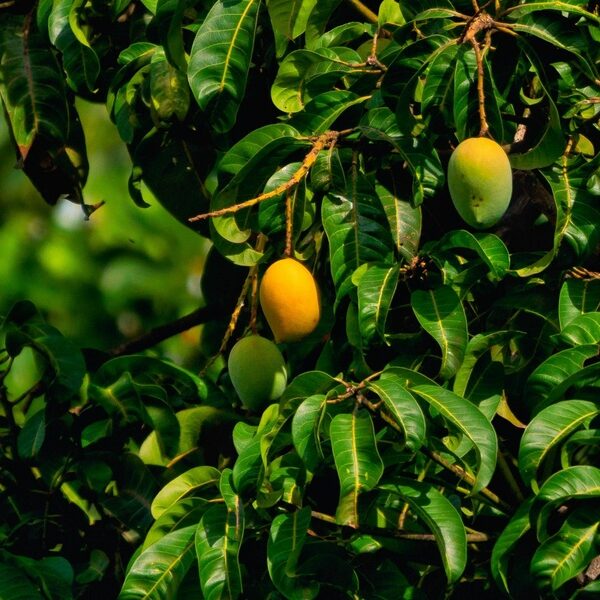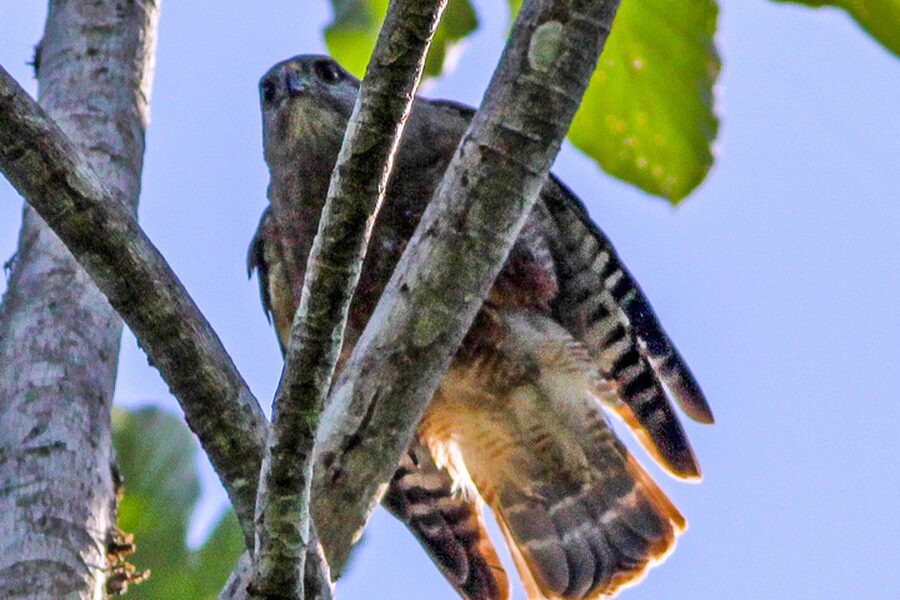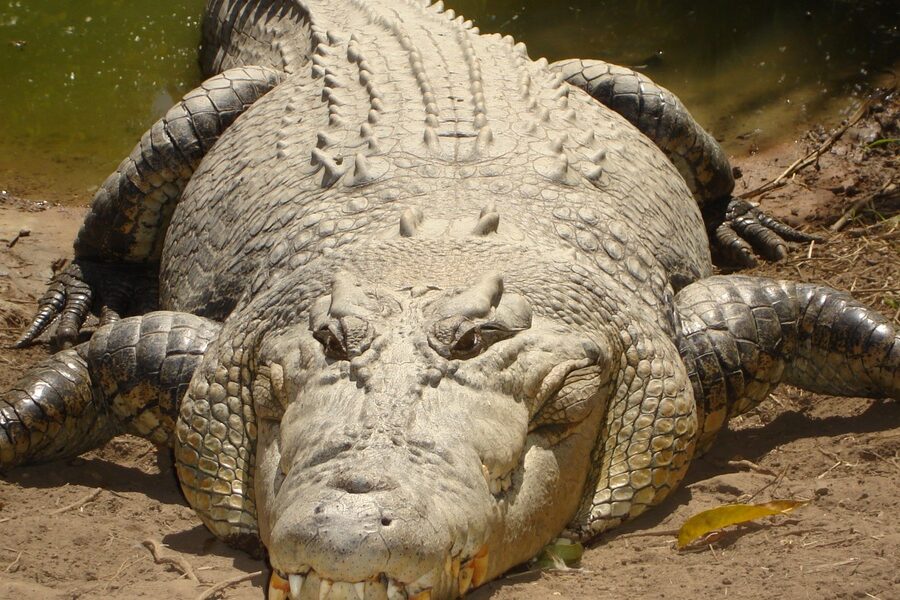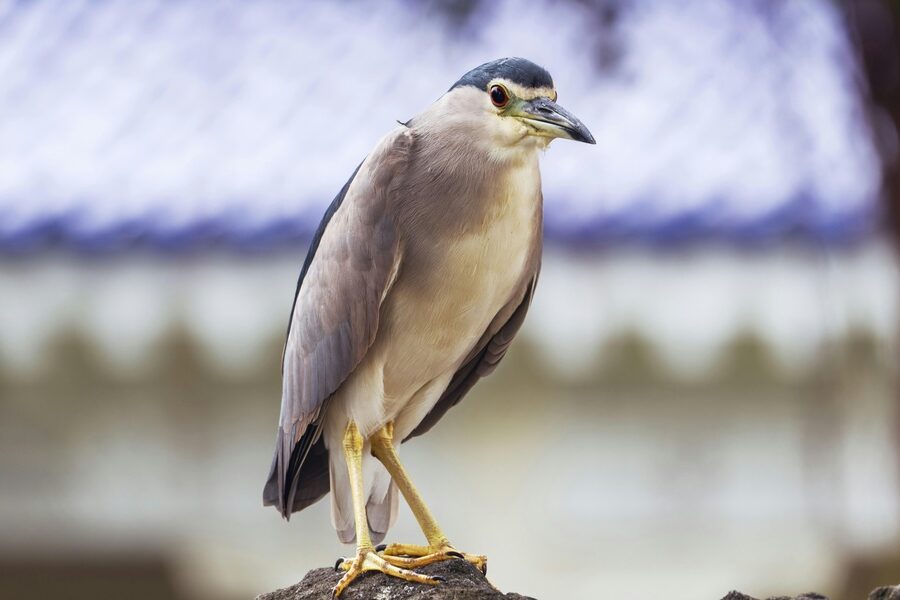Asia’s landscapes — from dense rainforests and river deltas to highland plateaus and crowded coastlines — support a vast mix of wildlife, and some species can pose real risks to people, pets and livestock. Understanding where and how those risks occur helps you travel and plan more safely.
There are 37 Dangerous Animals in Asia, ranging from Asian Elephant to Wild Boar. For each species you’ll find below entries organized as: Scientific name,Region / habitat,Danger type; severity (1-5), so you can quickly compare where animals live and what kind of danger they present — you’ll find below clear, compact data to guide your decisions.
How can I reduce the risk of an encounter with these animals while traveling in Asia?
Keep distance, avoid known habitat edges at dusk and dawn, secure food and trash when camping, follow local park rules and guides, and never attempt to feed or approach wild animals; for bites or scratches seek immediate medical care and consider rabies post-exposure treatment if relevant.
Which animals on the list cause the most human fatalities or serious injuries?
Large mammals (elephants, large predators), venomous snakes, crocodiles and rabid dogs account for many serious incidents, but patterns vary by region; use the severity ratings and regional habitat columns below to identify the highest local risks.
Dangerous Animals in Asia
| Name | Scientific name | Region / habitat | Danger type; severity (1-5) |
|---|---|---|---|
| Mosquito | Culicidae (family) | Asia-wide; wetlands, forests, urban areas | Disease vector; 5 |
| Indian Cobra | Naja naja | South Asia; farmland, forests, urban areas | Venom; 5 |
| Russell’s Viper | Daboia russelii | South & Southeast Asia; open grassy areas, farmland | Venom; 5 |
| Saw-scaled Viper | Echis carinatus | Middle East to South Asia; arid, sandy, rocky areas | Venom; 5 |
| Common Krait | Bungarus caeruleus | South Asia; fields, scrubland, near water | Venom; 5 |
| Saltwater Crocodile | Crocodylus porosus | Southeast Asia, South Asia, Oceania; coastal rivers, estuaries, mangroves | Predation; 5 |
| Bengal Tiger | Panthera tigris tigris | South Asia, parts of Southeast Asia; forests, grasslands, mangroves | Predation; 5 |
| Domestic Dog | Canis lupus familiaris | Asia-wide; urban and rural areas | Disease vector; 5 |
| Asian Elephant | Elephas maximus | South & Southeast Asia; forests, grasslands | Aggressive; 4 |
| Sloth Bear | Melursus ursinus | South Asia; forests, scrubland | Aggressive; 4 |
| King Cobra | Ophiophagus hannah | South & Southeast Asia; forests, near streams | Venom; 4 |
| Box Jellyfish | Chironex fleckeri | Coastal waters of Southeast Asia & Australia; shallow coastal seas | Venom; 4 |
| Malayan Krait | Bungarus candidus | Southeast Asia; forests, fields, near water | Venom; 4 |
| Asiatic Black Bear | Ursus thibetanus | Across Asia; mountainous forests | Aggressive; 4 |
| Gaur (Indian Bison) | Bos gaurus | South & Southeast Asia; evergreen forests, hills | Aggressive; 4 |
| Komodo Dragon | Varanus komodoensis | Indonesian islands of Komodo, Rinca, Flores, Gili Motang; savanna, forest | Predation, venom; 4 |
| Bull Shark | Carcharhinus leucas | Warm coastal waters, rivers, lakes across Asia | Predation; 4 |
| Leopard | Panthera pardus | Africa & Asia; forests, mountains, grasslands, urban fringes | Predation; 4 |
| Water Buffalo | Bubalus arnee (wild) | South & Southeast Asia; wetlands, grasslands | Aggressive; 3 |
| Malayan Pit Viper | Calloselasma rhodostoma | Southeast Asia; forests, plantations, farmland | Venom; 3 |
| Reticulated Python | Malayopython reticulatus | Southeast Asia; rainforests, woodlands, near rivers | Predation; 3 |
| Stonefish | Synanceia verrucosa | Indo-Pacific; coral reefs, rocky shores, shallow tropical waters | Venom; 3 |
| Blue-ringed Octopus | Hapalochlaena spp. | Indo-Pacific; tide pools, coral reefs | Venom; 3 |
| Rhesus Macaque | Macaca mulatta | South, Central & Southeast Asia; forests, urban areas | Aggressive, disease vector; 3 |
| Wild Boar | Sus scrofa | Across Eurasia; forests, farmland | Aggressive; 3 |
| Indian Red Scorpion | Hottentotta tamulus | India, Pakistan, Nepal; rocky ground, scrubland | Venom; 3 |
| Asian Giant Hornet | Vespa mandarinia | East & Southeast Asia; forests, low mountains | Venom; 2 |
| Ticks | Ixodida (order) | Asia-wide; forests, grassy areas | Disease vector; 2 |
| Lionfish | Pterois spp. | Indo-Pacific; coral reefs | Venom; 2 |
| Monocled Cobra | Naja kaouthia | South & Southeast Asia; grasslands, forests, farms, urban areas | Venom; 4 |
| Sun Bear | Helarctos malayanus | Southeast Asia; tropical forests | Aggressive; 3 |
| Tiger Shark | Galeocerdo cuvier | Tropical and temperate waters worldwide, including Asia | Predation; 4 |
| Burmese Python | Python bivittatus | Southeast Asia; rainforests, swamps | Predation; 3 |
| Great White Shark | Carcharodon carcharias | Coastal waters worldwide, including coasts of Japan, Philippines | Predation; 4 |
| Irukandji Jellyfish | Carukia barnesi & others | Indo-Pacific waters | Venom; 4 |
| Banded Sea Krait | Laticauda colubrina | Indo-Pacific; coral reefs, coastal waters | Venom; 2 |
| Cone Snail | Conus spp. | Indo-Pacific; coral reefs, shallow waters | Venom; 3 |
Images and Descriptions
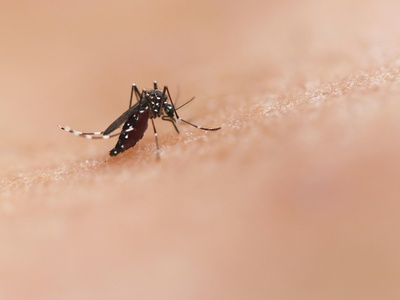
Mosquito
The world’s deadliest animal, not due to its bite but the diseases it spreads like malaria, dengue fever, and Japanese encephalitis. Responsible for hundreds of thousands of deaths annually in Asia. Use repellent and cover up, especially at dawn and dusk.
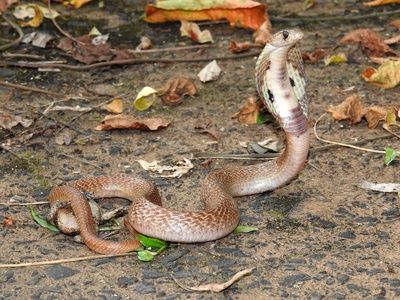
Indian Cobra
Part of India’s “Big Four” venomous snakes causing the most deaths. Its potent neurotoxin can cause paralysis and respiratory failure. Often found near human settlements, increasing encounter risk. If bitten, seek immediate medical attention for antivenom.
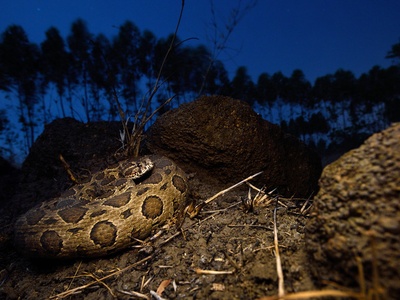
Russell’s Viper
Considered one of the deadliest snakes, its hemotoxic venom causes extreme pain, swelling, and severe bleeding. Responsible for thousands of deaths each year due to its aggressive nature and potent venom. It is exceptionally well-camouflaged in dry terrain.
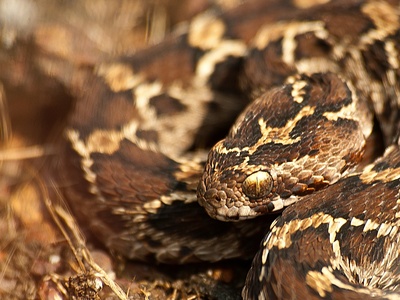
Saw-scaled Viper
The smallest of India’s “Big Four,” but its highly potent hemotoxic venom and aggressive, quick-to-strike nature make it extremely dangerous. It often makes a rasping sound by rubbing its scales together as a warning before striking.
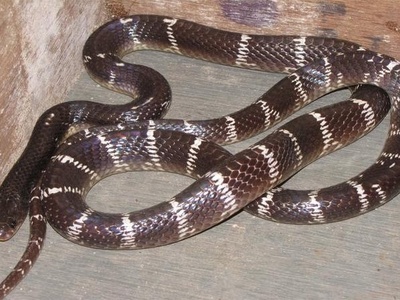
Common Krait
A nocturnal snake responsible for a high number of fatalities. Its bite is often painless, leading victims to ignore it until paralysis sets in. Its powerful neurotoxin can cause respiratory failure within hours, often while the victim is asleep.
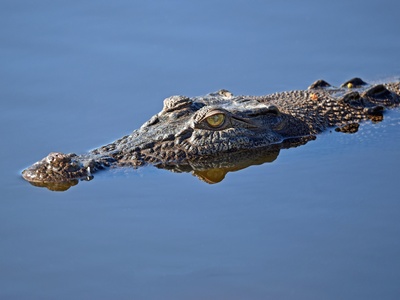
Saltwater Crocodile
The world’s largest living reptile, reaching over 20 feet long. An incredibly powerful ambush predator that is territorial and sees humans as prey. It is responsible for numerous fatal attacks each year in its range. Never swim in unverified waterways.
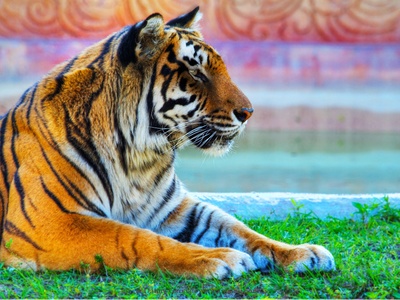
Bengal Tiger
The largest big cat, a powerful apex predator capable of taking down huge prey, including humans. While attacks are rare and often linked to old or injured tigers, they are almost always fatal. Most incidents occur in areas of habitat overlap.

Domestic Dog
While not inherently wild, dogs are the primary vector for rabies in Asia, a disease with a near 100% fatality rate once symptoms appear. Unprovoked attacks from stray dogs are common. Seek post-exposure prophylaxis immediately after any bite.
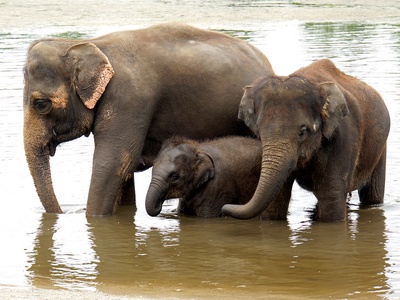
Asian Elephant
Despite their gentle image, elephants kill hundreds of people in Asia each year, usually by trampling. Incidents occur when they are surprised, feel threatened, or during crop-raiding. Never approach a wild elephant, especially a mother with a calf.
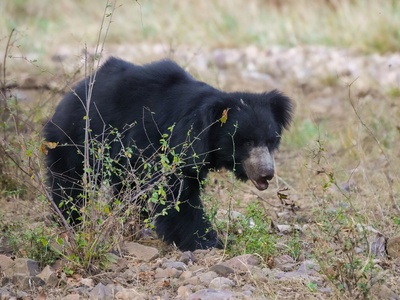
Sloth Bear
Known for its unpredictable and extremely aggressive nature, the sloth bear is more feared than tigers in some regions. It attacks with powerful claws and teeth, often mauling the victim’s face. Sudden encounters are the most dangerous.
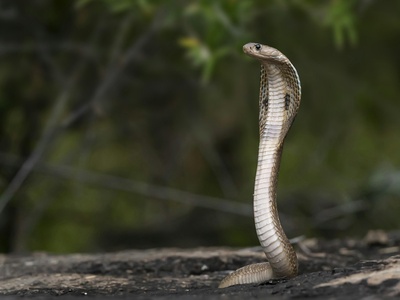
King Cobra
The world’s longest venomous snake. It delivers a massive volume of potent neurotoxin in a single bite, enough to kill an elephant. While it prefers to avoid humans, a threatened king cobra is exceptionally dangerous. It uniquely builds a nest for its eggs.
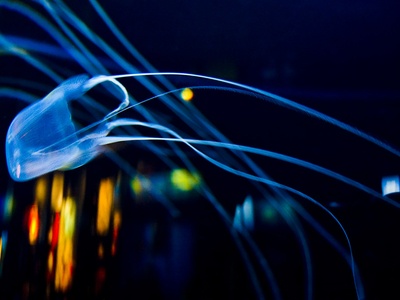
Box Jellyfish
Often called the most venomous marine animal. Its tentacles contain millions of stinging cells that cause excruciating pain, cardiac arrest, and death within minutes. Stings are a serious medical emergency. Wear protective swimwear in high-risk areas.
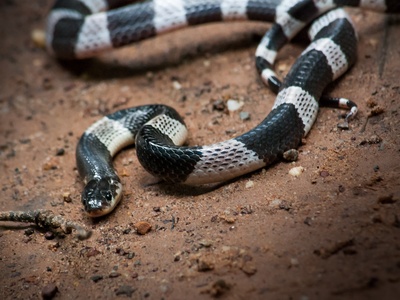
Malayan Krait
Like its Indian cousin, this krait is highly venomous with a neurotoxin that causes paralysis. It is nocturnal and often enters homes in rural areas, leading to bites on sleeping victims. Bites have a very high mortality rate without treatment.
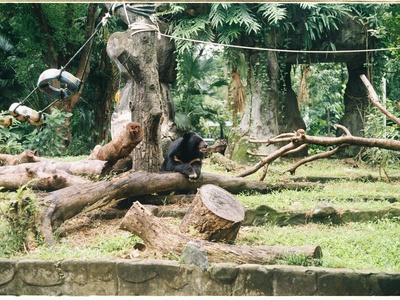
Asiatic Black Bear
Also known as the moon bear, it is more likely to attack humans than many other bear species. It is unpredictable and can be very aggressive, especially when surprised or defending cubs. Attacks often result in severe mauling injuries.
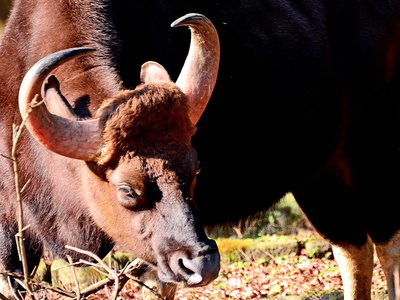
Gaur (Indian Bison)
The world’s largest bovine, a gaur is a massive and powerful animal. While they generally avoid humans, a lone bull or a protective mother can charge without warning, easily causing fatal injuries with its bulk and horns. Keep a respectful distance.
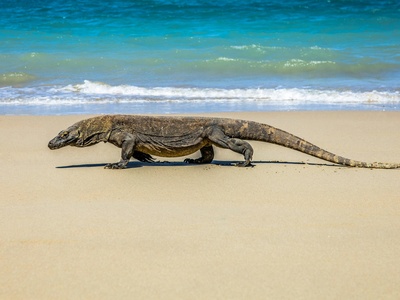
Komodo Dragon
The world’s largest lizard, it is a formidable predator. Its bite delivers both venom and toxic bacteria, causing shock and massive bleeding. While attacks on humans are rare, they can be fatal. Always explore its habitat with an experienced local guide.
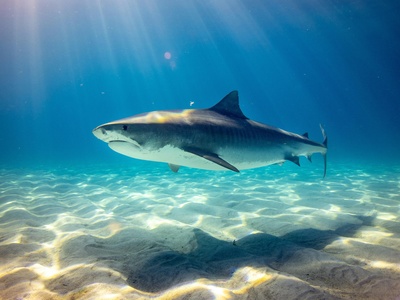
Bull Shark
Notorious for its aggression and ability to travel far up freshwater rivers. The bull shark is one of the “big three” sharks responsible for the most unprovoked attacks on humans. Its powerful bite and presence in murky water make it a serious threat.
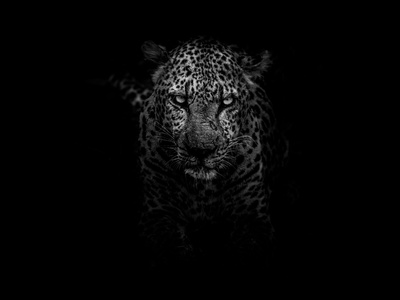
Leopard
Highly adaptable and stealthy, leopards sometimes live close to human settlements, leading to conflict. While most avoid people, some become man-eaters. They are incredibly strong and can carry prey heavier than themselves up trees.
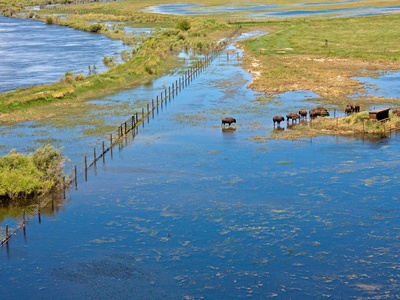
Water Buffalo
Wild water buffalo are far more dangerous than their domesticated relatives. They possess enormous horns and immense power. When threatened, they are known to charge humans and vehicles, often with fatal results. Lone bulls are particularly unpredictable.
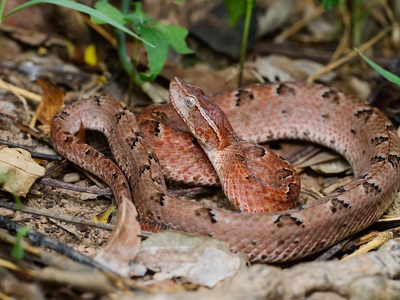
Malayan Pit Viper
A common cause of venomous snakebites in its range. Its hemotoxic venom causes severe pain, swelling, and tissue damage, and can be fatal. Its excellent camouflage on the forest floor leads to many accidental encounters.
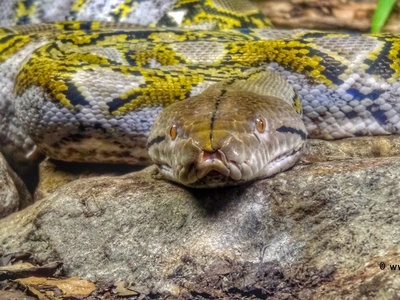
Reticulated Python
The world’s longest snake, capable of exceeding 20 feet. It is a powerful constrictor that kills by suffocation. While it rarely attacks humans, very large individuals are capable of killing and swallowing an adult. Most bites are from smaller, non-lethal individuals.
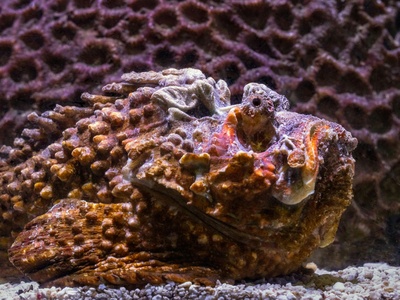
Stonefish
The most venomous fish in the world, its dorsal fins hide needle-like spines that inject potent neurotoxin. It is masterfully camouflaged as a rock. Stepping on one causes excruciating pain, paralysis, and can be fatal without medical care.
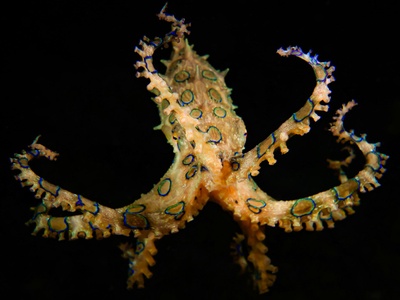
Blue-ringed Octopus
Small and docile, but carries enough potent, painless neurotoxin to kill over 20 humans. Its warning sign is the flashing of its iridescent blue rings. There is no antivenom, and survival depends on immediate respiratory support.
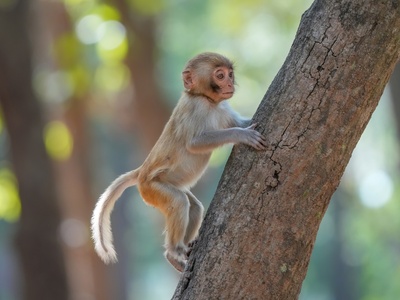
Rhesus Macaque
Often found in temples and cities, these monkeys can be aggressive, delivering nasty bites. They are a primary carrier of the Herpes B virus, which is rare in humans but often fatal. Never feed them and keep a safe distance.
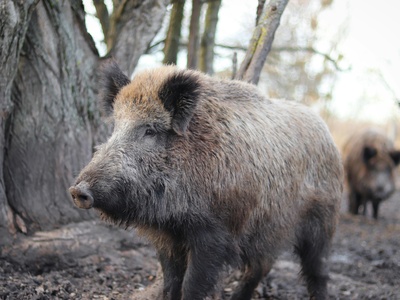
Wild Boar
Equipped with sharp tusks and a bad temper, wild boars can be very dangerous, especially a sow with piglets. They can charge and inflict deep, serious wounds. They are also responsible for many traffic accidents in rural areas.
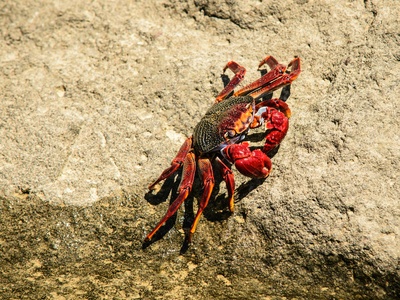
Indian Red Scorpion
Considered one of the world’s most lethal scorpions. Its venom is a potent neurotoxin that can cause cardiovascular and respiratory collapse, especially in children. Its sting is a medical emergency requiring immediate attention.
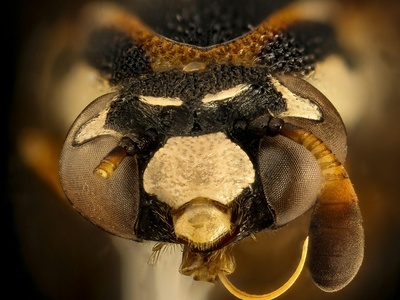
Asian Giant Hornet
The world’s largest hornet, its sting is extremely painful and contains a potent venom that can cause tissue damage. Multiple stings can lead to kidney failure and death, even in non-allergic individuals. Never disturb their nests.
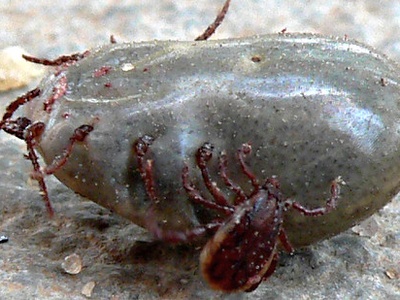
Ticks
These small arachnids are vectors for serious diseases, including tick-borne encephalitis, Lyme disease, and Kyasanur Forest Disease (KFD) in India. They attach to the skin to feed on blood. Check for ticks after hiking in endemic areas.
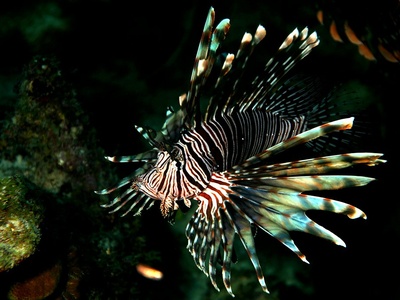
Lionfish
Recognizable by its beautiful, fan-like fins, which are tipped with venomous spines. A sting is not typically fatal but causes intense pain, swelling, and nausea. It is a defensive weapon, so incidents occur from accidental contact.
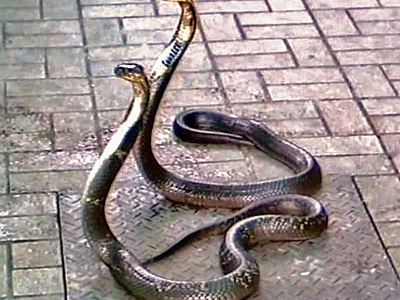
Monocled Cobra
This highly venomous cobra is common throughout its range, leading to frequent human encounters. Its potent neurotoxic and cytotoxic venom causes paralysis and tissue death. It is a major cause of snakebite fatalities in Thailand and surrounding regions.
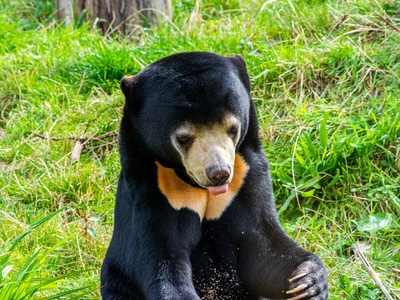
Sun Bear
The smallest bear species, but it possesses a surprisingly powerful bite and long claws. Sun bears are known to be aggressive and will attack humans if surprised or threatened. Deforestation is increasing human-bear conflict.
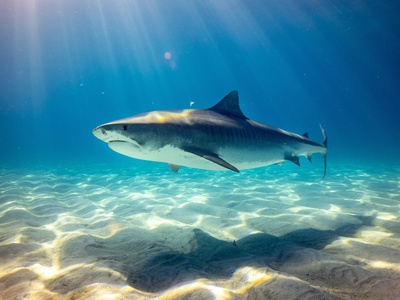
Tiger Shark
A large and indiscriminate predator known for eating almost anything. It ranks second only to the great white in number of recorded attacks on humans. It frequents shallow reefs, harbors, and canals, increasing the potential for encounters.
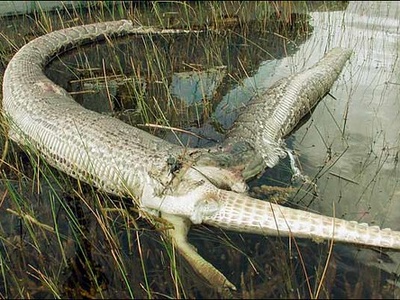
Burmese Python
One of the five largest snake species in the world. As a powerful constrictor, large individuals pose a potential threat to humans, particularly children. While documented attacks are very rare, its size and strength demand respect.
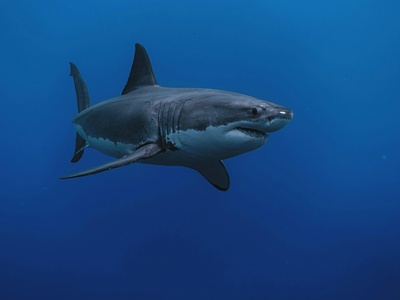
Great White Shark
The world’s largest predatory fish and responsible for more recorded human bite incidents than any other shark. While Asia is not its primary hunting ground, it is present. Attacks are rare but often fatal due to its size and power.

Irukandji Jellyfish
A group of tiny but extremely venomous box jellyfish, some no bigger than a fingernail. The initial sting is often mild, but severe symptoms (Irukandji syndrome) develop later, including extreme pain, vomiting, and potential cardiac arrest.
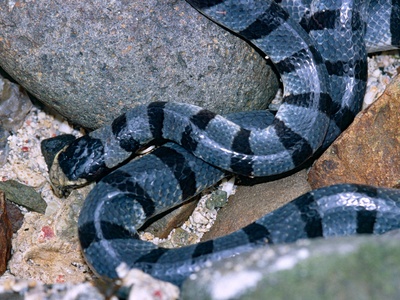
Banded Sea Krait
This amphibious sea snake has a highly potent neurotoxin, but it is extremely docile and rarely bites humans unless severely provoked or handled. Most bites occur when fishermen are removing them from nets. They are often seen by divers.
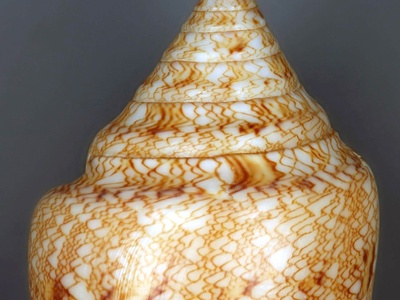
Cone Snail
These predatory sea snails have a harpoon-like tooth that injects a complex cocktail of toxins (conotoxin) to paralyze prey. Stings to humans are rare but can be fatal, particularly from the larger species. Never handle their beautiful shells.
